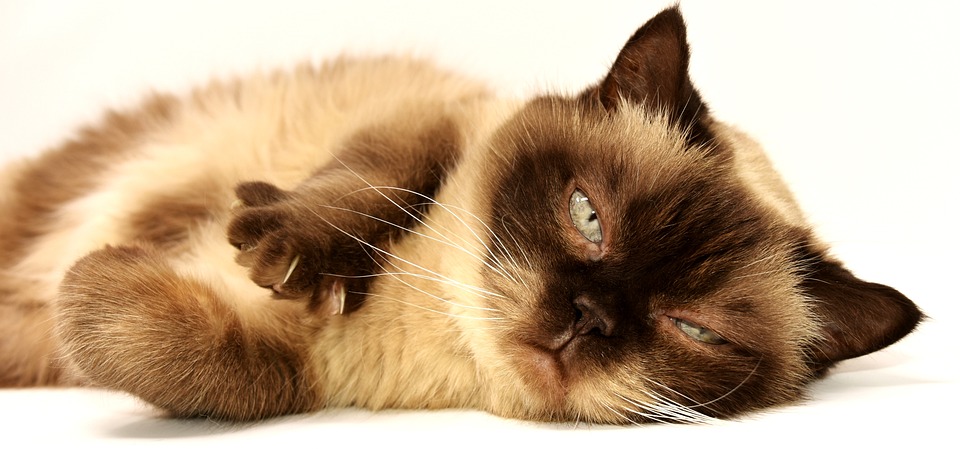Introduction:
Understanding Your Cat’s Headbutting Behavior
Cats have a unique way of showing affection, and one of the most endearing behaviors they exhibit is headbutting. While it may seem strange to humans, headbutting is a common display of love and trust in the feline world. By understanding the meaning behind this behavior, you can deepen your bond with your furry companion. In this guide, we will explore the various aspects of headbutting behavior in cats and shed light on its significance.
Heading 1: The Meaning Behind Feline Headbutting Behavior
Sub-heading 1.1: Decoding the Language of Headbutts
Cats communicate through a variety of ways, and headbutting is one of their preferred methods. When a cat headbutts you, it is their way of saying “hello” or expressing affection. Understanding the subtle nuances behind headbutts can help you decipher their messages better.
Sub-heading 1.2: The Psychology of Headbutting
Headbutting behavior stems from a cat’s natural instincts and social behavior. It is an instinctive way for cats to establish familiarity and trust with their human companions. By rubbing their scent glands located on their head against you, they are marking you as part of their territory.
Sub-heading 1.3: The Bonding Power of Headbutts
Headbutting is not only a means of communication but also a bonding experience for cats and their owners. When a cat headbutts you, they are seeking physical contact and reassurance. It is a gesture that signifies their trust and deepens the emotional connection between you and your feline friend.
Heading 2: Signs and Signals of Affectionate Headbutting
Sub-heading 2.1: Gentle Nudges and Rubs
When a cat headbutts you, they often accompany it with gentle nudges and rubs. These actions are an invitation for further physical contact and indicate that they are seeking your attention and affection.
Sub-heading 2.2: Body Language Clues
In addition to headbutting, cats display several body language cues that indicate their affection. Look for relaxed ears, a relaxed body posture, and slow blinking eyes as signs that your cat is enjoying the interaction.
Sub-heading 2.3: Purring and Vocalizations
While headbutting, cats may also purr or emit soft vocalizations. These additional sounds are their way of expressing contentment and happiness. Pay attention to these auditory signals as they provide valuable insights into your cat’s emotions.
Heading 3: The Science Behind Headbutting and Pheromones
Sub-heading 3.1: Feline Facial Pheromones
Cats possess scent glands on their face, particularly around their cheeks and forehead. These glands release pheromones, which are chemical signals that play a crucial role in feline communication. Understanding the role of pheromones is key to understanding headbutting behavior.
Sub-heading 3.2: The Role of Pheromones in Headbutting
When a cat headbutts you, they are transferring their facial pheromones onto you. This act marks you as part of their social group and creates a sense of familiarity and safety. The transfer of pheromones through headbutting is a vital part of their bonding process.
Sub-heading 3.3: How Pheromones Affect Cat Behavior
Pheromones have a profound impact on a cat’s behavior. The scent of familiar pheromones can help reduce stress, anxiety, and promote a sense of security. By engaging in headbutting behavior, cats are actively releasing these pheromones to create a positive environment.
Heading 4: FAQs About Headbutting Behavior in Cats
Sub-heading 4.1: Why does my cat headbutt me?
Cats headbutt their owners as a way to show affection, mark their territory, and establish a bond with their human companions.
Sub-heading 4.2: Are headbutts a sign of dominance or submission?
Headbutting behavior in cats is not related to dominance or submission. Instead, it is a social behavior that signifies trust and affection.
Sub-heading 4.3: Should I be concerned if my cat doesn’t headbutt me?
Not all cats exhibit headbutting behavior, and that is perfectly normal. Cats have different ways of expressing their affection, so if your cat doesn’t headbutt, they may have other ways of showing their love.
Sub-heading 4.4: How can I encourage more headbutting behavior?
To encourage headbutting behavior, create a positive and safe environment for your cat. Spend quality time together, offer gentle petting, and engage in interactive play. This will strengthen your bond and increase the likelihood of headbutting.
Sub-heading 4.5: Is headbutting behavior seen in all cats?
While headbutting behavior is common among cats, not all cats engage in this behavior. Each cat has its unique personality and ways of expressing affection.
Conclusion:
Embracing the Love Behind Feline Headbutts
Understanding your cat’s headbutting behavior is a wonderful way to connect with your feline companion on a deeper level. By recognizing the meaning behind headbutts, interpreting the signs and signals, and appreciating the science of pheromones, you can foster a stronger bond with your cat. Embrace the love behind feline headbutts and cherish these moments of affection with your furry friend. Remember, if you have any concerns about your cat’s behavior, always consult with a certified veterinarian.








